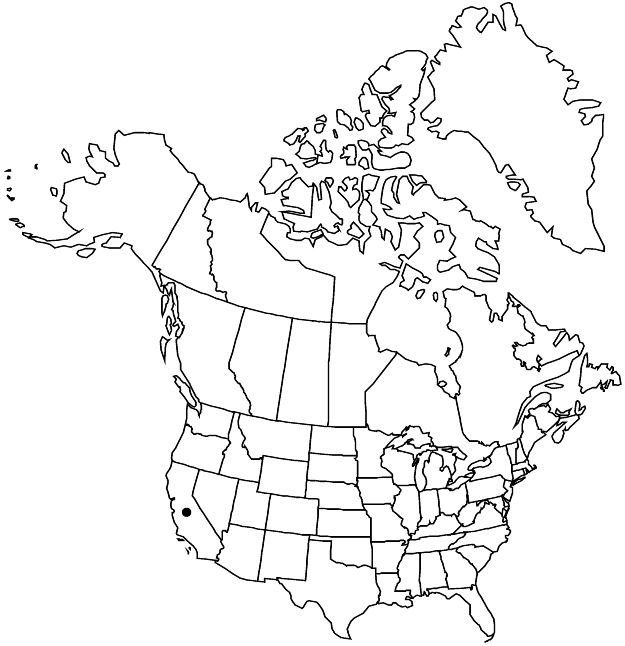Horkelia bolanderi
Proc. Amer. Acad. Arts 7: 338. 1868.
Plants openly matted, grayish. Stems ascending to erect, 1–3 (–4.5) dm, hairs ascending to appressed. Basal leaves ± planar, 3–8 (–9) × 0.7–1.5 cm; stipules entire; leaflets 6–9 per side, separate to ± overlapping at least distally, ± cuneate to obovate, 4–10 × 2–7 mm, 1/2 to nearly as wide as long, divided 1/3 to midrib into 3–6 acute, sometimes obtuse, teeth, densely strigulose, often villous marginally or at least apically. Cauline leaves (2 or) 3–6. Inflorescences ± congested to open, most flowers arranged in glomerules. Pedicels (1–) 2–4 (–6) mm. Flowers 10 mm diam.; epicalyx bractlets elliptic-lanceolate, (1.5–) 1.8–3 × 0.5–1 mm, ± 2/3 length of sepals, entire; hypanthium 1–1.5 × 2–4 mm, less than 1/2 as deep as wide, interior slightly pilose; sepals spreading to ± reflexed, lanceolate, (2.5–) 3–4 mm; petals oblong to oblanceolate, 3–5.5 × 1.5–2 mm, apex rounded to slightly emarginate; filaments 0.5–2 × 0.3–0.4 mm, anthers (0.4–) 0.5–0.8 mm; carpels 10–20 (–27); styles (1–) 1.5–2 mm. Achenes brown to dark-brown, 1–1.3 mm, usually faintly roughened.
Phenology: Flowering summer.
Habitat: Edges of vernal lakes, meadows, seeps, in grasslands, conifer woodlands
Elevation: 400–1100 m
Discussion
Of conservation concern.
W. L. Jepson ([1923–1925]) and P. A. Munz and I. M. Johnston (1925) independently adopted an expanded circumscription of Potentilla bolanderi that included four species of Horkelia recognized by P. A. Rydberg (1908c): H. bernardina, H. bolanderi, H. clevelandii, and H. rydbergii. These were treated as three varieties, which D. D. Keck (1938) converted to subspecies as H. bolanderi subsp. bolanderi, subsp. clevelandii, and subsp. parryi, the last encompassing H. bernardina and H. rydbergii. These subspecies were restored to species rank by B. Ertter (1993c) as H. bolanderi, H. clevelandii, and H. rydbergii, along with the establishment of H. yadonii to accommodate populations from Monterey County assigned to subsp. parryi by Keck.
As now circumscribed, Horkelia bolanderi is known from five locations in the northern Coast Ranges in Colusa, Lake, and Mendocino counties; records from more southerly localities would be referenced to one of the segregate species discussed above.
Selected References
None.
Lower Taxa
"thin" is not a number.No values specified."dm" is not declared as a valid unit of measurement for this property."dm" is not declared as a valid unit of measurement for this property."dm" is not declared as a valid unit of measurement for this property.
